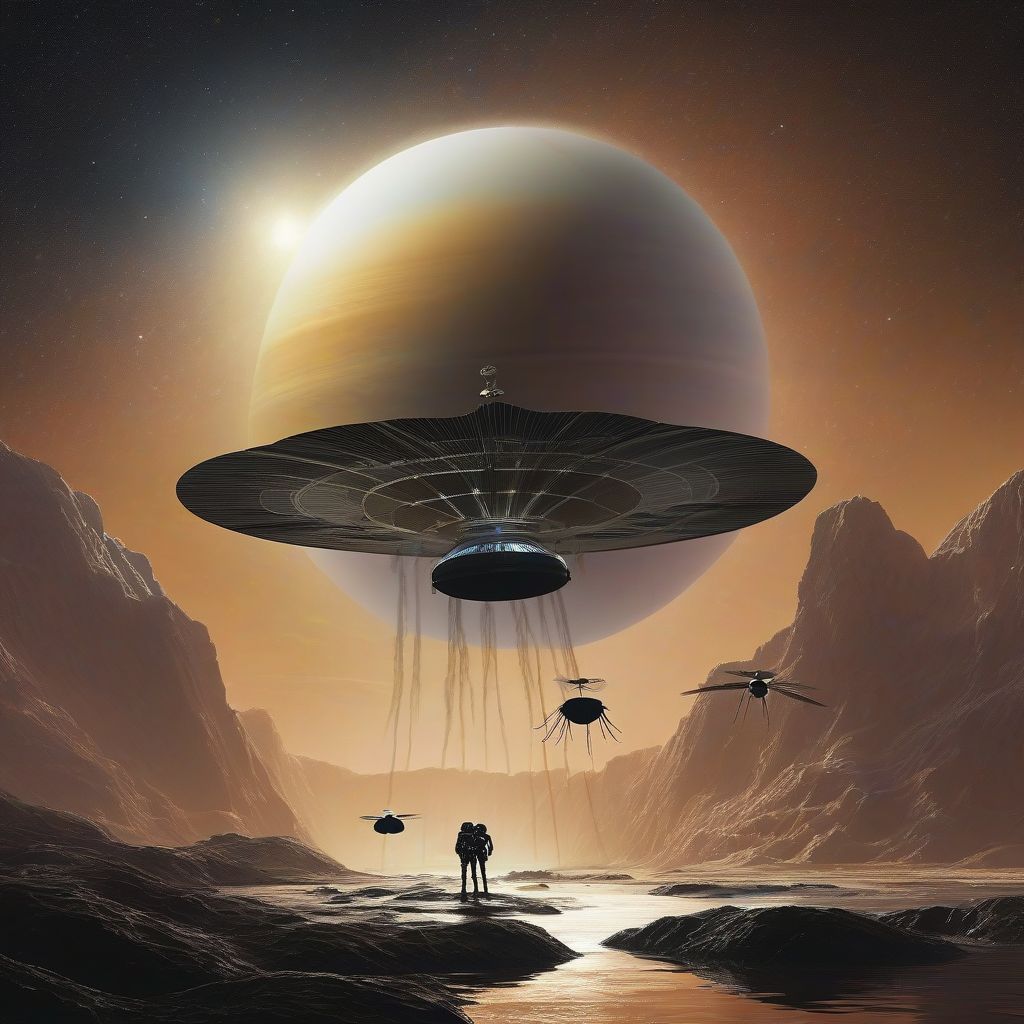Imagine a world where life exists beyond Earth, not just as microbes, but potentially in complex, fascinating forms. This isn’t science fiction, it’s the driving force behind missions to two of Saturn’s most intriguing moons: Enceladus and Titan. These icy worlds, once considered barren and lifeless, are now at the forefront of our quest to understand the origins and prevalence of life in the universe. So, how exactly are missions to Enceladus and Titan advancing this search? Let’s dive in.
Unlocking Enceladus’ Secrets: A World of Hidden Oceans
Enceladus, a small, icy moon, harbors a vast, global ocean beneath its frozen surface. This ocean, confirmed by the Cassini mission, is not just water; it’s salty, contains organic molecules, and exhibits hydrothermal activity – key ingredients for life as we know it. Cassini’s dramatic flybys through Enceladus’ plumes, erupting from fissures in the south polar region, revealed the presence of these vital components. These plumes, essentially geysers of water ice, organic molecules, and salts, offer a tantalizing glimpse into the ocean’s composition without the need to land and drill through the ice.
Plumes: A Window into Enceladus’ Ocean
The discovery of Enceladus’ plumes was a game-changer. It provided direct access to the subsurface ocean, allowing scientists to analyze its chemical makeup and assess its potential for habitability. The presence of organic molecules, like methane and complex hydrocarbons, suggests that Enceladus’ ocean could have the necessary building blocks for life. Furthermore, the detection of hydrothermal activity indicates a source of energy that could sustain microbial life, similar to hydrothermal vents on Earth’s ocean floor.
Future Missions: Delving Deeper
While Cassini provided invaluable data, future missions are crucial to definitively determine whether life exists on Enceladus. Concepts like the Enceladus Orbilander propose orbiting and eventually landing on the moon, allowing for more detailed analysis of the plumes and potentially even direct sampling of the ocean through the fissures. Such missions would search for specific biosignatures, like amino acids and lipids, which would provide compelling evidence for life.
Exploring Titan: A Methane World with Prebiotic Potential
Titan, Saturn’s largest moon, is a unique and intriguing world. Its thick, nitrogen-rich atmosphere shrouds a surface dotted with lakes and seas, not of water, but of liquid methane and ethane. This methane-based environment, although drastically different from Earth’s, presents an alternative pathway for the development of life, potentially based on different chemistries.
Organic Chemistry in Abundance
Titan is rich in organic molecules, the building blocks of life. These molecules are formed in the atmosphere and rain down onto the surface, creating a complex prebiotic environment. While methane-based life is hypothetical, the sheer abundance of organic material on Titan makes it a compelling target for astrobiological research.
Dragonfly: Exploring Titan’s Surface
NASA’s Dragonfly mission, a rotorcraft lander, is scheduled to explore Titan’s surface in the mid-2030s. Dragonfly will hop across the landscape, analyzing the composition of the surface and atmosphere at various locations. It will investigate the potential habitability of Titan’s diverse environments, from the organic dunes to the methane lakes, searching for signs of past or present life.
Life as We Don’t Know It?
Titan’s unique environment challenges our understanding of life and its requirements. Could life exist in a methane-based world? Could it utilize different chemical processes than life on Earth? Titan provides an unparalleled opportunity to explore these fundamental questions and expand our understanding of life’s potential diversity.
 Enceladus and Titan Life Search
Enceladus and Titan Life Search
The Significance of These Missions
The missions to Enceladus and Titan represent a paradigm shift in our search for life beyond Earth. They have expanded our understanding of the potential habitats for life and challenged our assumptions about what life might look like. These moons, once considered unlikely candidates, are now prime targets in our quest to answer one of humanity’s most profound questions: are we alone?
From Science Fiction to Scientific Reality
The possibility of life on Enceladus and Titan has captured the imagination of scientists and the public alike. What was once relegated to the realm of science fiction is now the focus of cutting-edge scientific exploration. The data gathered from these missions will not only inform our search for life but also broaden our understanding of planetary science and the origins of our solar system.
A Giant Leap for Astrobiology
These missions represent a giant leap forward in the field of astrobiology. They offer a unique opportunity to study two vastly different environments with the potential for life. The discoveries made at Enceladus and Titan could revolutionize our understanding of life’s origins and its potential to exist throughout the universe.
Conclusion
The ongoing and future missions to Enceladus and Titan are revolutionizing our search for extraterrestrial life. From the plumes of Enceladus to the methane lakes of Titan, these icy worlds hold tantalizing clues about the potential for life beyond Earth. By studying these unique environments, we are not only searching for life as we know it but also expanding our understanding of what life could be. The journey to these distant moons is a journey into the unknown, a journey that could rewrite our understanding of life in the universe. What do you think the future holds for the search for life on these fascinating moons? Share your thoughts in the comments below!



